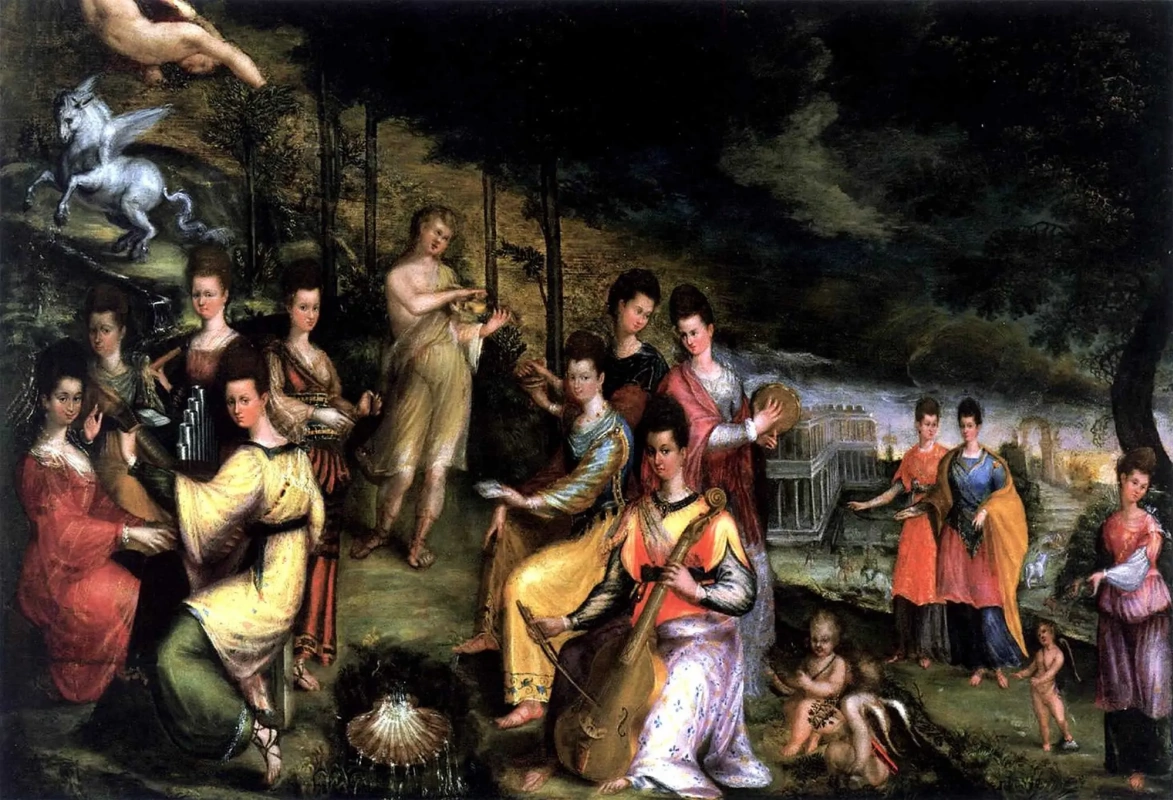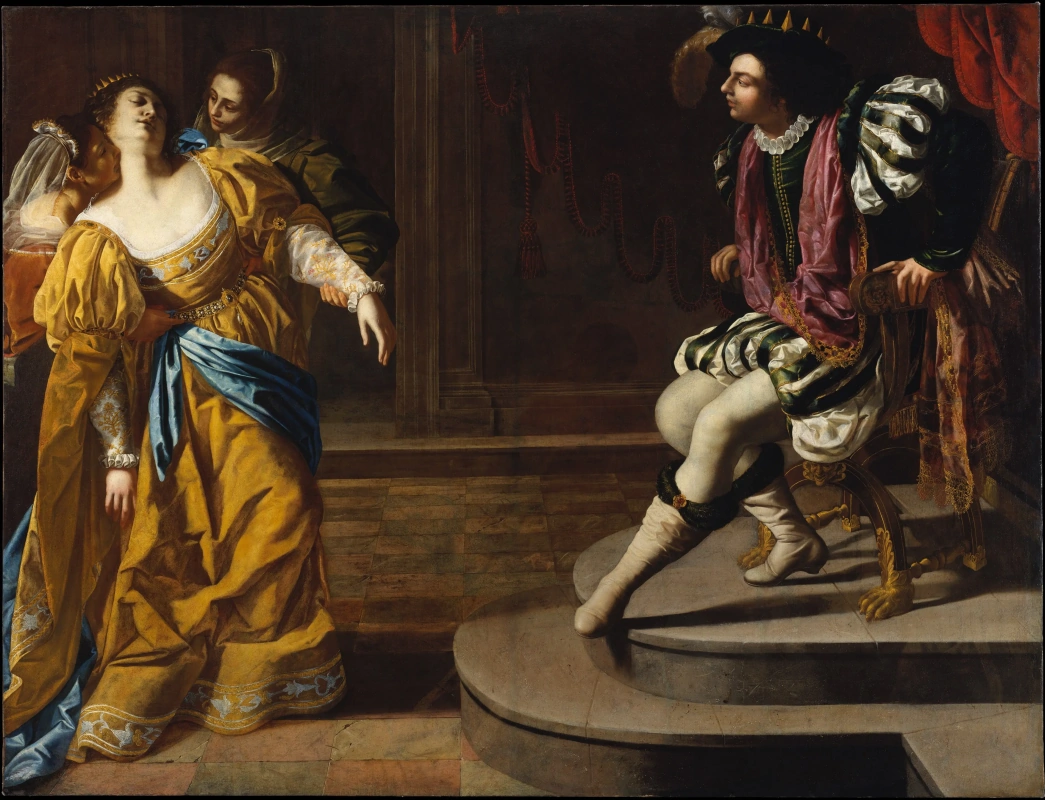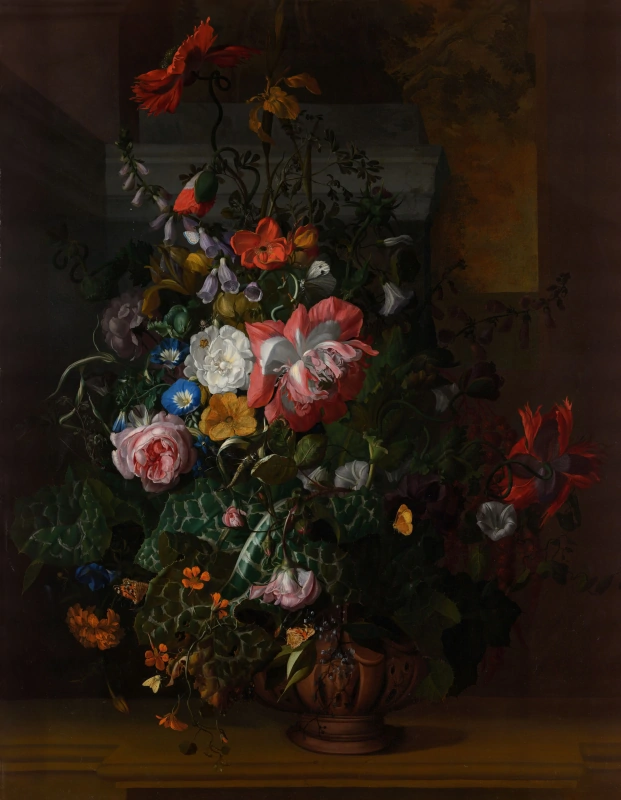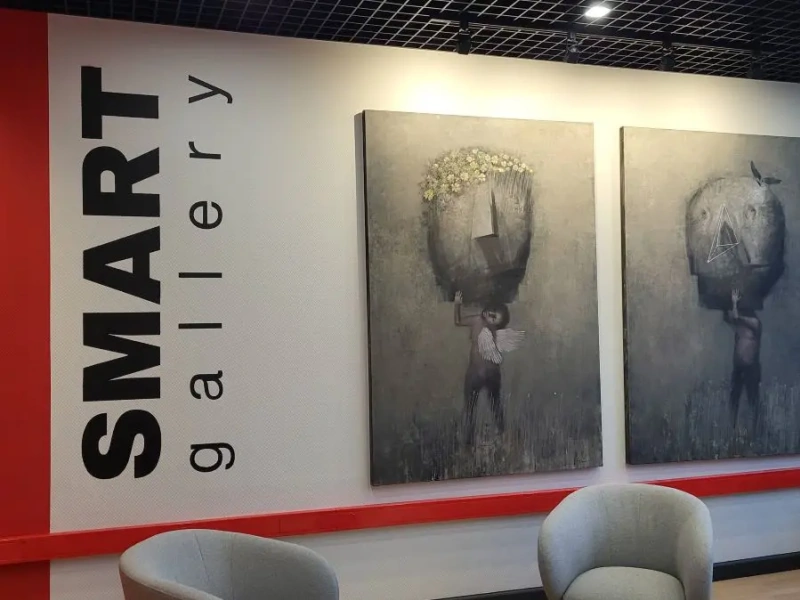
Levina Teerlinc (ca.1510-1576) – court artist of the Tudors
She was granted an annuity income of 40 pounds — more substantial than that of her predecessor, Hans Holbein himself, who received 33 pounds.
Levina worked for four Tudors: Henry VIII and his children — Edward VI, Mary I, and Elizabeth I, but her works are less known than the works of other court artists. She limited her output to portrait miniatures, which are personal mementos which weren’t formally displayed. Lovers exchanged such exquisite things and kept them in jewel-boxes or wore them around their necks, like jewellery hidden under their clothes. Miniatures also served as perfect diplomatic gifts, and could also signify political affiliation.
Teerlinc, Elizabeth I, 1560s
Catharina van Hemessen (1527-1587)
Rich citizens often commissioned her to create portraits, which are distinguished by a realistic depiction and delicate manner of painting, while their softness and tenderness of execution give away the "woman's touch".
Catharina’s portraits found great favour with Maria of Austria, who served as regent of the Low Countries and later became the artist’s patron. When Maria moved back to Spain in 1556, the artist and her husband were invited to join her. Catharina was given a sizeable pension for life. After Maria’s death, Catharina and her husband returned to Antwerp.
Catharina van Hemessen Female Portrait, 1550s
Sofonisba Anguissola (1532-1625) – an artist of a noble background
The father ensured that his daughters receive a well-rounded education and encouraged them to cultivate and perfect their talents. Four of his daughters became painters, but Elena abandoned painting to become a nun; both Anna Maria and Europa gave up art upon marrying, while Lucia, whose talent was acknowledged by Vasari, who saw her paintings, died at the age of 25. Amilcare’s only son — Asdrubale, studied music and Latin. Sofonisba became a professional artist.
S. Anguissola. Portrait of the Artist’s Family: Father Amilcare, Sister Minerva, and Brother Asdrubale, 1568
She became good friends with the queen, and the king, apparently, also had a soft spot for the artist, and decided to help her: he found her a husband — Fabrizio Moncada Pignatelli, son of the Prince of Paternò, Viceroy of Sicily and paid a dowry of 12,000 scudi for the marriage!
Anguissola, Portrait of Philip II of Spain, 1565
Sofonisba lived to be 93 years and continued working almost until the last years of her life. Other artists often visited her, and her experience cleared the way for the next generation of artists.
In 1624, Anguissola was visited by the young Flemish painter Anthony van Dyck. He claimed that their conversation taught him more about the "true principles" of painting than anything else in his life. Van Dyck drew Sofonisba’s portrait while visiting her.
Anthony van Dyck. Portrait of Sofonisba Anguissola, 1624
Lavinia Fontana (1552-1614)
She worked with portraiture as well as with religious and mythological scenes, and was also the first woman to paint nudes.
In the painting, Lavinia tells about herself, emphasizing her advantages to the family of the groom, who held a higher position. She portrayed herself playing the clavichord, painted an easel in the background near the window, signed the painting in Latin — all these details had to demonstrate the girl’s education, while the maidservant indicated prosperity. A rich red dress reminds of the upcoming wedding — in Bologna, girls traditionally walked up the isle in a red dress.
Fontana, Self-Portrait, 1577
Fede Galizia (1578-1630) – the first in the genre of still life
Artemisia Gentileschi - a feminist artist
At first, Artemisia studied with her father, quite a famous painter Orazio Gentileschi, whose style took inspiration from Caravaggio, and later — with Agostino Tassi. From that moment, dramatic events started happening in her life. Agostino raped the young woman, she pressed charges against him and the case became widely publicized. The artist was offered to marry a girl, but he was already married and was imprisoned by court order. Artemisia conveyed her emotions in paintings — she chose scenes where women avenged on their offenders or became objects of sexual harassment.
A. Gentileschi. Self-Portrait
She was friends with Galileo Galilei, knew Van Dyck, Jusepe de Ribera and Sofonisba Anguissola and became the first woman accepted into the Accademia delle Arti del Disegno (Academy of the Arts of Drawing). After her death, many of Artemisia’s works were attributed to her father.
Judith Leyster (1609-1660)
Mary Beale (1633-1699) – the first woman artist in the history of England
Charles took the role of her assistant and kept detailed reports on customers, sessions and expenses. Moreover, Charles became interested in painting techniques and, together with his wife, began to experiment, recording the results in the special journal entitled Experimental Secrets found out in the way of Painting. These notes include interesting information relating to their trials in manufacturing expensive pigments, experiments in priming canvases and efforts to perfect procedures such as the quick-drying of paint layers.
Mary Beale. Self-Portrait
Elisabetta Sirani (1638-1665)
Her works were famous not only in her native Bologna, but also in Florence and Rome, where she gained her special membership in the Academy of St. Luke. Elisabetta had a very rapid working method, and art lovers from all over visited her studio to see her at work. And although she died at only 27, she had completed over 170 paintings, 14 engravings and many drawings.
E. Sirani. Allegory of Painting (Self-Portrait), 1658
There is a legend about how the Grand Duke of Tuscany, Cosimo III de' Medici visited the artist’s studio and saw her painting Virgin Mary. He liked her work so much that commissioned her to create a similar painting. Elisabetta immediately painted Virgin and did it so skilfully that as soon as the paints dried, the Duke left the studio with the painting.
E. Sirani. Virgin and Child, 1663
Rachel Ruysch (1664-1750)
At 15, Rachel was apprenticed to Willen van Aelst, one of the greatest still-life painters. It was he who taught the girl to combine different types of flowers and turn bouquets into works of art, create asymmetric compositions, skilfully adding bugs, butterflies and grasshoppers to them. Another person, who had his hands in Rachel’s education, was her father, who was a botanist; it was in the family, where science and art reigned, where these beautiful paintings with their delicate charm appeared.
Ruysch. Still-Life with Flowers
Rachel’s father, who was a botanist, had his hands in the artist’s education, too: he revealed the secrets of flora to her. Thus, combining science and art, Rachel Ruysch created paintings that fascinate with perfect harmony and extraordinary beauty of nature.
Ruysch. Roses, Convolvulus, Poppies, and Other Flowers in an Urn, 1680s











































А вот корректоры на сайте (если они вообще есть) работаю плохо.
"Еще одним признанием таланта Лавинии был заказ на автопортрет доминиканского ученого Альфонсо Чьякона" Может, "ОТ доминиканского ученого"?